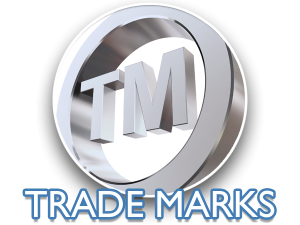TRADE MARKS
WHAT IS THE VALUE OF A TRADE MARK AND WHY SHOULD I REGISTER A TRADE MARK?
You may be in the process of building a reputation of your product. If your product is a commercial success, competitors may try to imitate your product and capitalise on your goodwill and reputation. To ensure that the buying public does not confuse your goods or services with those of your competitors, registering a Trade Mark is a cost-effective way of protecting your name and reputation.
It is not compulsory to register a trade mark before it is used. The common law of South Africa offers some protection but only where trade marks have been used and have acquired a reputation and goodwill in South Africa. However, the following are some real advantages to be obtained by registering a trade mark:
- the prevention of infringement of a trade mark is easier, less time-consuming and less costly in cases where a registered trade mark is held as opposed to proceedings based on common law rights;
- in the event of infringement, damages may be claimed from the infringer;
- the acquisition of rights through registration is generally much quicker than building up the required common law repute, and goodwill, through use;
- registration allows for the effective appointment and control of licensees and franchisees;
- registered trade marks are relatively easy to assign to third parties;
- registered trade marks can serve as security for loans in that they may be bonded;
- and a South African trade mark registration can be of assistance in obtaining registered trade mark protection in other countries.
WHO MAY APPLY FOR REGISTRATION?
Generally, only the person or company who can claim to be the owner of the trade mark and who intends to use it, or is using it, may validly seek its registration. However, the applicant need not have the intention of itself using the trade mark where:
- it is the trustee of a company about to be formed, and that company will become the owner of the trade mark; or,
- a licensee will be appointed and the licensee will use the trade mark.
DOES REGISTRATION COVER OTHER COUNTRIES?
No, a trade mark application is territorial and hence covers only the country in which it has been filed. Should an applicant require protection in a foreign country a separate trade mark application will have to be filed in the country of interest.

HOW CAN THE APPLICATION FOR REGISTRATION BE OPPOSED?
Within a period of three months from the date of advertisement in the Patent Journal, any party may lodge opposition to the registration of the trade mark. Extensions of this period can be obtained on application to the Registrar.
Various grounds of opposition are available and include conflict with prior registered or common law trade marks. Generally trade marks which do not conform with the requirements for registration may be opposed.
CLASSIFICATION OF CLASSES
GOODS
Class 1 Chemicals used in industry, science and photography, as well as in agriculture, horticulture and forestry; unprocessed artificial resins, unprocessed plastics; manures; fire extinguishing compositions; tempering and soldering preparations; chemical substances for preserving foodstuffs; tanning substances; adhesives used in industry.
Class 2 Paints, varnishes, lacquers; preservatives against rust and against deterioration of wood; colorants; mordants; raw natural resins; metals in foil and powder form for painters, decorators, printers and artists.
Class 3 Bleaching preparations and other substances for laundry use; cleaning, polishing, scouring and abrasive preparations; soaps; perfumery, essential oils, cosmetics, hair lotions; dentifrices.
Class 4 Industrial oils and greases; lubricants; dust absorbing, wetting and binding compositions; fuels (including motor spirit) and illuminants; candles and wicks for lighting.
Class 5 Pharmaceutical and veterinary preparations; sanitary preparations for medical purposes; dietetic food and substances adapted for medical or veterinary use, food for babies; dietary supplements for humans and animals; plasters, materials for dressings; material
for stopping teeth, dental wax; disinfectants; preparations for destroying vermin; fungicides, herbicides.
Class 6 Common metals and their alloys; metal building materials; transportable buildings of metal; materials of metal for railway tracks; non-electric cables and wires of common metal; ironmongery, small items of metal hardware; pipes and tubes of metal; safes; goods of common metal not included in other classes; ores.
Class 7 Machines and machine tools; motors and engines (except for land vehicles); machine coupling and transmission components (except for land vehicles); agricultural implements other than hand-operated; incubators for eggs; automatic vending machines.
Class 8 Hand tools and implements (hand-operated); cutlery; side arms; razors.
Class 9 Scientific, nautical, surveying, photographic, cinematographic, optical, weighing, measuring, signaling, checking (supervision), life-saving and teaching apparatus and instruments; apparatus and instruments for conducting, switching, transforming, accumulating, regulating or controlling electricity; apparatus for recording, transmission or reproduction of sound or images; magnetic data carriers, recording discs; compact discs, DVDs and other digital recording media; mechanisms for coin-operated apparatus; cash registers, calculating machines, data processing equipment, computers; computer software; fire-extinguishing apparatus.
Class 10 Surgical, medical, dental and veterinary apparatus and instruments, artificial limbs, eyes and teeth; orthopedic articles; suture materials.
Class 11 Apparatus for lighting, heating, steam generating, cooking, refrigerating, drying, ventilating, water supply and sanitary purposes.
Class 12 Vehicles; apparatus for locomotion by land, air or water.
Class 13 Firearms; ammunition and projectiles; explosives; fireworks.
Class 14 Precious metals and their alloys and goods in precious metals or coated therewith, not included in other classes; jewelry, precious stones; horological and chronometric instruments.
Class 15 Musical instruments.
Class 16 Paper, cardboard and goods made from these materials, not included in other classes; printed matter; bookbinding material; photographs; stationery; adhesives for stationery or household purposes; artists’ materials; paint brushes; typewriters and office requisites (except furniture); instructional and teaching material (except apparatus); plastic materials for packaging (not included in other classes); printers’ type; printing blocks.
Class 17 Rubber, gutta-percha, gum, asbestos, mica and goods made from these materials and not included in other classes; plastics in extruded form for use in manufacture; packing, stopping and insulating materials; flexible pipes, not of metal.
Class 18 Leather and imitations of leather, and goods made of these materials and not included in other classes; animal skins, hides; trunks and traveling bags; umbrellas and parasols; walking sticks; whips, harness and saddlery.
Class 19 Building materials (non-metallic); non-metallic rigid pipes for building; asphalt, pitch and bitumen; non-metallic transportable buildings; monuments, not of metal.
Class 20 Furniture, mirrors, picture frames; goods (not included in other classes) of wood, cork, reed, cane, wicker, horn, bone, ivory, whalebone, shell, amber, mother-of-pearl, meerschaum and substitutes for all these materials, or of plastics.
Class 21 Household or kitchen utensils and containers; combs and sponges; brushes (except paint brushes); brush-making materials; articles for cleaning purposes; steelwool; unworked or semi-worked glass (except glass used in building); glassware, porcelain and earthenware not included in other classes.
Class 22 Ropes, string, nets, tents, awnings, tarpaulins, sails, sacks and bags (not included in other classes); padding and stuffing materials (except of rubber or plastics); raw fibrous textile materials.
Class 23 Yarns and threads, for textile use.
Class 24 Textiles and textile goods, not included in other classes; bed covers; table covers.
Class 25 Clothing, footwear, headgear.
Class 26 Lace and embroidery, ribbons and braid; buttons, hooks and eyes, pins and needles; artificial flowers.
Class 27 Carpets, rugs, mats and matting, linoleum and other materials for covering existing floors; wall hangings (non-textile).
Class 28 Games and playthings; gymnastic and sporting articles not included in other classes; decorations for Christmas trees.
Class 29 Meat, fish, poultry and game; meat extracts; preserved, frozen, dried and cooked fruits and vegetables; jellies, jams, compotes; eggs; milk and milk products; edible oils and fats.
Class 30 Coffee, tea, cocoa and artificial coffee; rice; tapioca and sago; flour and preparations made from cereals; bread, pastry and confectionery; ices; sugar, honey, treacle; yeast, baking-powder; salt; mustard; vinegar, sauces (condiments); spices; ice.
Class 31 Grains and agricultural, horticultural and forestry products not included in other classes; live animals; fresh fruits and vegetables; seeds; natural plants and flowers; foodstuffs for animals; malt.
Class 32 Beers; mineral and aerated waters and other non-alcoholic beverages; fruit beverages and fruit juices; syrups and other preparations for making beverages.
Class 33 Alcoholic beverages (except beers).
Class 34 Tobacco; smokers’ articles; matches.
SERVICES
Class 35 Advertising; business management; business administration; office functions.
Class 36 Insurance; financial affairs; monetary affairs; real estate affairs.
Class 37 Building construction; repair; installation services.
Class 38 Telecommunications.
Class 39 Transport; packaging and storage of goods; travel arrangement.
Class 40 Treatment of materials.
Class 41 Education; providing of training; entertainment; sporting and cultural activities.
Class 42 Scientific and technological services and research and design relating thereto; industrial analysis and research services; design and development of computer hardware and software.
Class 43 Services for providing food and drink; temporary accommodation.
Class 44 Medical services; veterinary services; hygienic and beauty care for human beings or animals; agriculture, horticulture and forestry services.
Class 45 Legal services; security services for the protection of property and individuals; personal and social services rendered by others to meet the needs of individuals.
CAN A TRADE MARK APPLICATIONS BE CANCELLED?
Persons may apply for cancellation on the basis that they are the true proprietors of the trade mark, or that the trade mark has been wrongly registered, being non-distinctive or in conflict with an existing mark, or that the registration is contrary to law.
Registration of a trade mark is made on the basis that it is intended to be used. In consequence, it is possible for any third party who is inhibited by the registration, to apply for cancellation of the trade mark registration. Any continuous period of non-use of five years or more can form the basis for such cancellation proceedings. In addition, the owner of a trade mark should not allow it to be used deceptively or in conflict with the provisions of any endorsements it may bear, as this can also afford grounds for cancellation of the registration.








